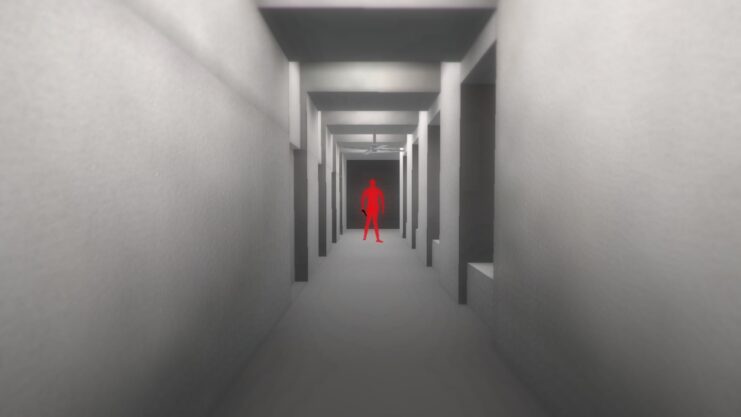Browser Games That Boost Creativity in 2025 present an exciting opportunity for players to explore their imaginative capabilities while having fun. As technology continues to evolve, these games are becoming more sophisticated, offering unique platforms for creativity. They provide an interactive environment where players can engage in artistic expression, problem-solving, and innovative thinking, making them an essential part of modern gaming culture.
With the rise of browser-based gaming, the landscape is set to transform how we think about creativity in gaming. These games not only entertain but also stimulate the mind, encouraging players to think outside the box and explore new ideas. The year 2025 promises a range of engaging browser games specifically designed to inspire creativity, blending fun gameplay with artistic challenges and collaborative experiences.
In today’s fast-paced world, the importance of effective communication cannot be overstated. Whether in personal interactions, business dealings, or even casual conversations, the way we convey our thoughts can significantly impact the outcome of our engagements. This post will delve into various aspects of communication, from understanding its foundational elements to enhancing your skills for better interactions.
### Understanding Communication
At its core, communication is the process of sending and receiving messages. This may occur verbally, non-verbally, or in written forms. Communication is not just about speaking; it also involves listening and understanding the context of the message. Effective communicators know how to tailor their message according to their audience, ensuring clarity and engagement.
#### The Elements of Communication
1. Sender: The individual or group initiating the conversation. The sender’s intention and clarity of the message play a crucial role in effective communication.
2. Message: This is the content of what is being communicated. The message must be clear, concise, and relevant to the audience.
3. Medium: The channel through which the message is transmitted. This could be face-to-face conversations, emails, phone calls, social media, or even body language.
4. Receiver: The individual or audience that receives the message. Understanding the receiver’s background and perspective is key to ensuring the message is interpreted as intended.
5. Feedback: This is the response from the receiver, which helps the sender gauge whether the message was understood correctly. Feedback can also include non-verbal cues such as nodding or facial expressions.
By understanding these essential components, individuals can enhance their communication skills, leading to more fruitful interactions.
### Enhancing Communication Skills
Now that we have a grasp on the basics, let’s discuss some practical tips to improve your communication skills.
#### 1. Active Listening
One of the most underrated aspects of communication is active listening. This involves fully focusing on the speaker, understanding their message, and responding thoughtfully. Here are some ways to practice active listening:
– Maintain Eye Contact: This shows that you are engaged and interested in what the other person is saying.
– Avoid Interrupting: Let the speaker finish their thoughts before jumping in. This demonstrates respect for their viewpoint.
– Summarize and Reflect: After the speaker has finished, summarize what they said to confirm your understanding. For instance, “So, if I understand correctly, you’re saying that…”
#### 2. Tailor Your Message
Consider your audience when crafting your message. Different people may require different approaches. For example, when speaking to a group of experts, you might use technical jargon, while a lay audience would benefit from simpler language and more explanations. Always aim for clarity to ensure your message is accessible.
#### 3. Non-Verbal Communication
Non-verbal cues can often speak louder than words. Body language, facial expressions, and gestures can enhance or contradict your verbal message. Pay attention to your own non-verbal signals, and be observant of those from others. Here’s a quick rundown:
– Body Language: Open postures and gestures convey confidence, while crossed arms can signal defensiveness.
– Facial Expressions: Smiling can foster friendliness, while a furrowed brow might indicate confusion or concern.
– Tone of Voice: The same words can have different meanings depending on how they’re delivered. Be mindful of your tone.
#### 4. Be Clear and Concise
In a world filled with information overload, being clear and concise is vital. Aim to communicate your message in as few words as possible while retaining the necessary context. Use simple language and avoid jargon unless you are sure your audience understands it.
#### 5. Ask Questions
Encourage dialogue by asking open-ended questions. This not only shows that you value the other person’s thoughts but also helps to clarify any ambiguities. Questions like “What do you think about…?” or “Can you elaborate on…?” can pave the way for deeper discussions.
### The Role of Technology in Communication
In recent years, technology has transformed the way we communicate. While it offers numerous advantages, it also comes with challenges. Here are some ways technology impacts our communication:
– Instant Messaging: Platforms like Slack, WhatsApp, and others allow for quick exchanges, but they can also lead to misunderstandings due to the lack of non-verbal cues.
– Video Conferencing: Tools like Zoom and Microsoft Teams have made remote communication easier. However, technical glitches can disrupt conversations, so it’s vital to be prepared for such issues.
– Social Media: While social media platforms enable us to connect with people worldwide, they can also lead to superficial interactions. Maintaining meaningful conversations is essential, even online.
### Conclusion
Effective communication is a skill that can be developed and refined over time. By understanding its foundational elements and actively practicing techniques such as active listening, tailoring messages, and utilizing non-verbal cues, you can enhance your interactions significantly. Remember, communication is not just about exchanging information; it’s about building connections, fostering relationships, and understanding one another. Embrace the art of communication, and watch your personal and professional relationships flourish. Happy communicating!
Answers to Common Questions: Browser Games That Boost Creativity In 2025
What are browser games that boost creativity?
These are online games designed to inspire players’ creativity through artistic challenges, problem-solving tasks, and collaborative gameplay.

How do these games enhance creativity?
They encourage players to think creatively by offering unique challenges that require innovative solutions and artistic expression.
Are there any specific genres of games that focus on creativity?
Yes, genres like simulation, role-playing, and puzzle games often include elements that promote creative thinking.
Can playing these games benefit other areas of life?
Yes, engaging in creative gameplay can enhance skills such as critical thinking, collaboration, and adaptability in various aspects of life.
What should I look for in a creative browser game?

Look for games that offer unique challenges, opportunities for customization, and interactive elements that promote collaboration and exploration.
